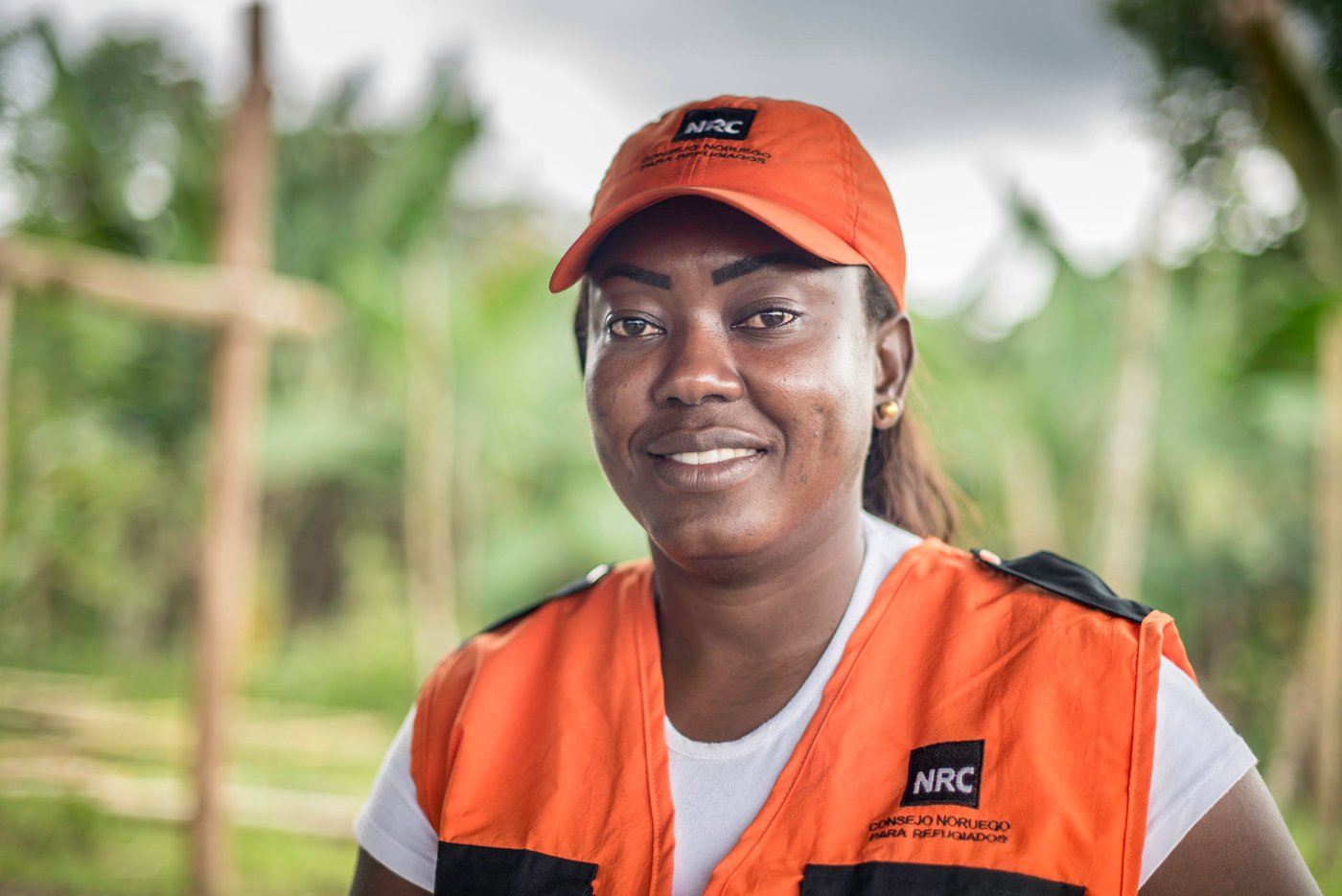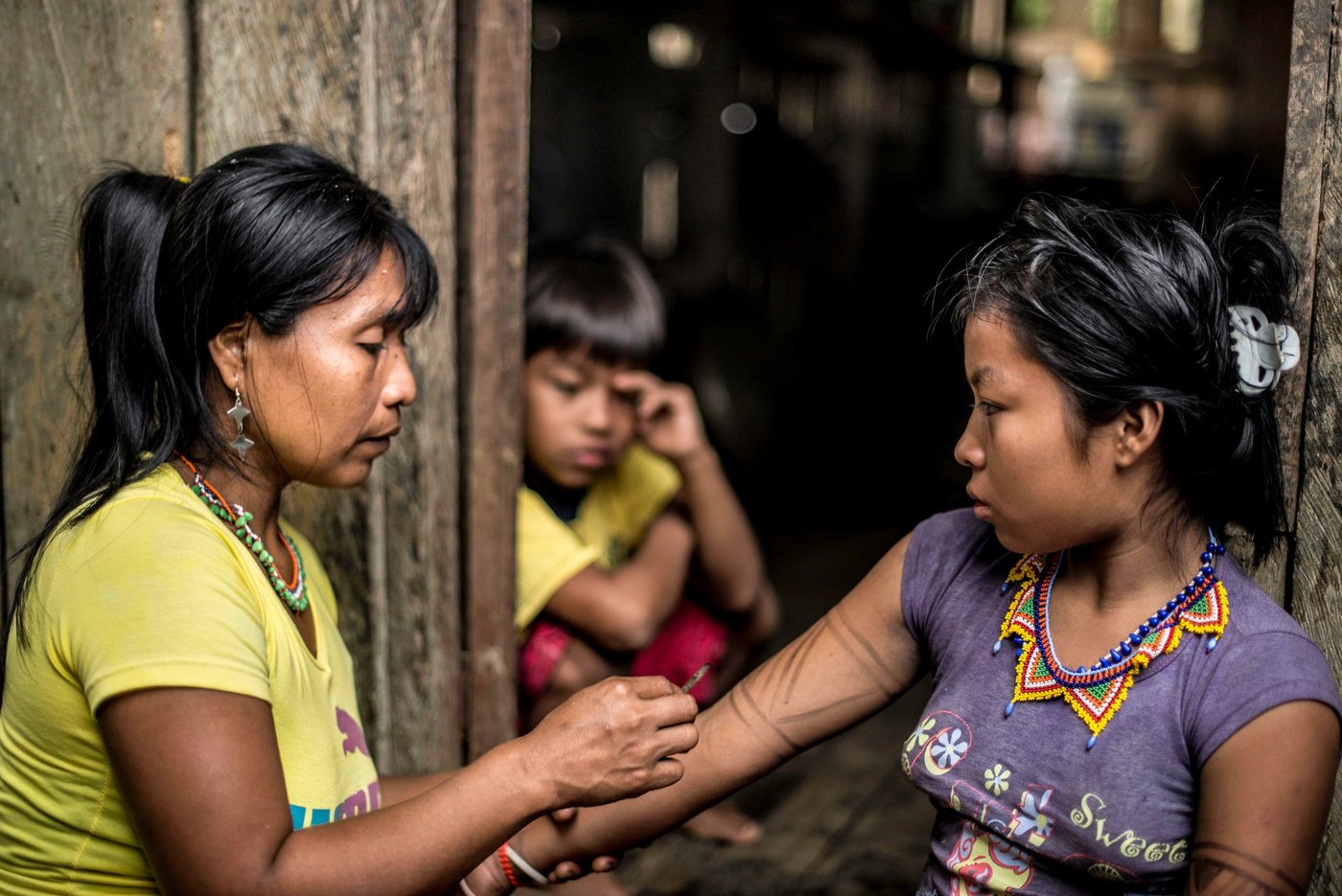"We are afraid," says Eva's husband. "If they can kill one of our leaders, they can easily kill one of us."
Colombia's indigenous population has been heavily affected by the conflict in the country – more than one year after the peace agreement between FARC-EP and the government. On 24 October 2017, one of the leaders of the Embera indigenous group was shot and killed in the pacific region Chocó. The day after, Eva, 36, and her family fled their home. The shots had been fired just 200 meters from their door.
*Names have been changed for security reasons.
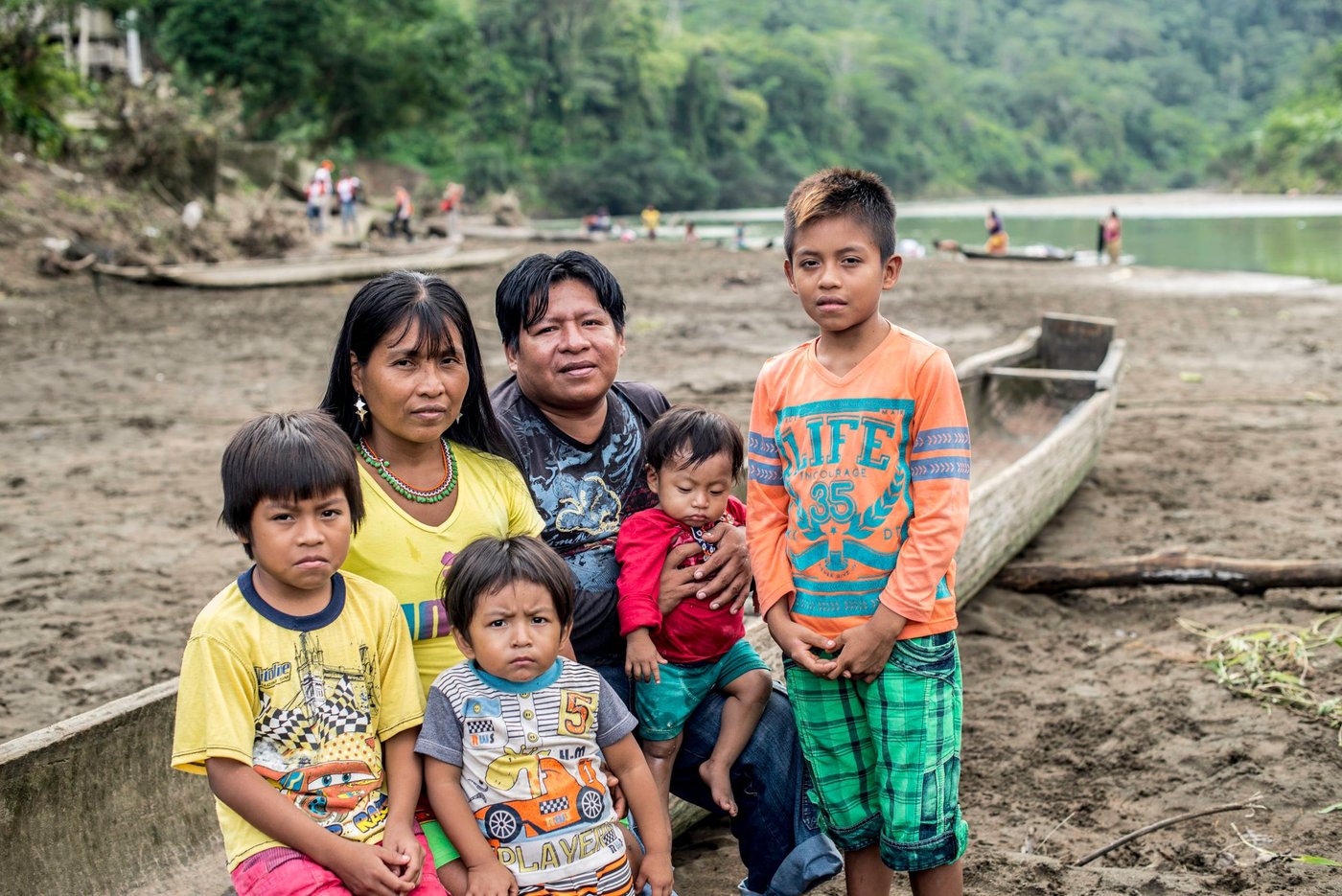
Fleeing for their lives up the river
Together with her husband and four small children, Eva fled in a small wooden boat upstream along the river in Colombia's lush rainforest. After six long hours, they arrived in a village where they were welcomed by relatives and friends from the Embera community.
"I hope we can get help to survive," says Eva.
Her husband agrees. He hopes they will receive support from the government after returning home. Their crops are probably destroyed, and they will be dependent on support to survive. Meanwhile, they receive food and shelter from generous friends and relatives.
Read also: Displaced in their own country
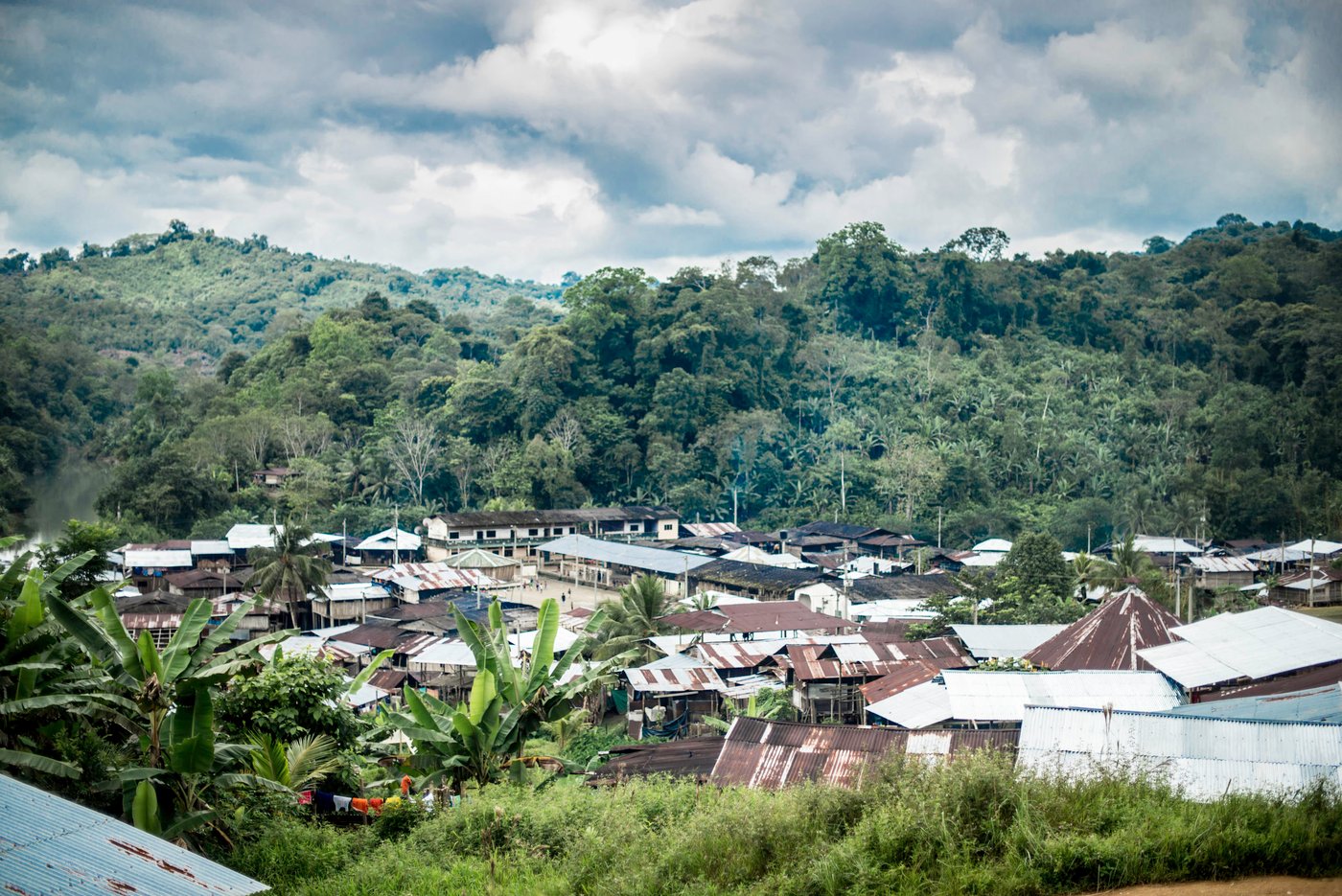
Sheltered among friends
"I have no idea how long we can stay here," says Eva.
She is glad her family is safe, but says that living away from home is challenging.
"Living here, in another's house, is not the same as living in your own home. At home we slept in hammocks."
Eva, her husband and four of their sons were among the more than thousand people who sought refuge in the village after the murder. Previously, the village consisted of about 2,000 inhabitants, and the massive growth in population takes its toll. Eva and her family share a small house with two other families.
"We are fifteen people. We cook together, and every family sleeps together on one mattress beneath a mosquito net."
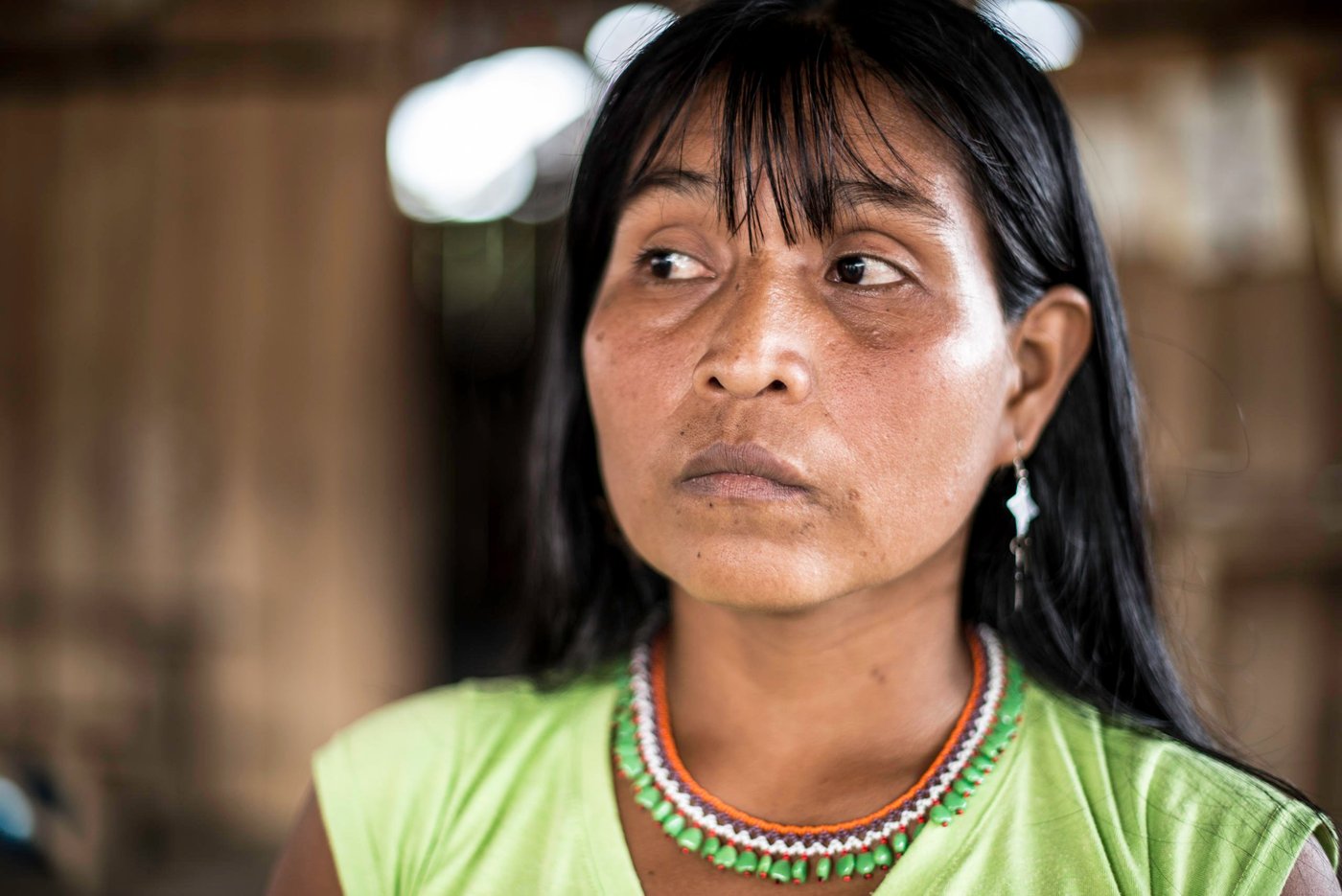
Where is the peace?
In a village close to where Eva and her family are staying, we meet the local priest. He explains why the fighting and the killings in the region continue despite the peace agreement.
"The government is completely absent in these areas, they have no control. Instead, the armed groups are fighting for control."
That is why the population is forced to flee, again and again. Afro-Colombians and the indigenous population are those who have suffered the most in this conflict. And they continue to suffer even after the peace agreement.
"They are the real victims of the murders and the violence," says the priest.
Read also: 10 things threatening the peace in Colombia
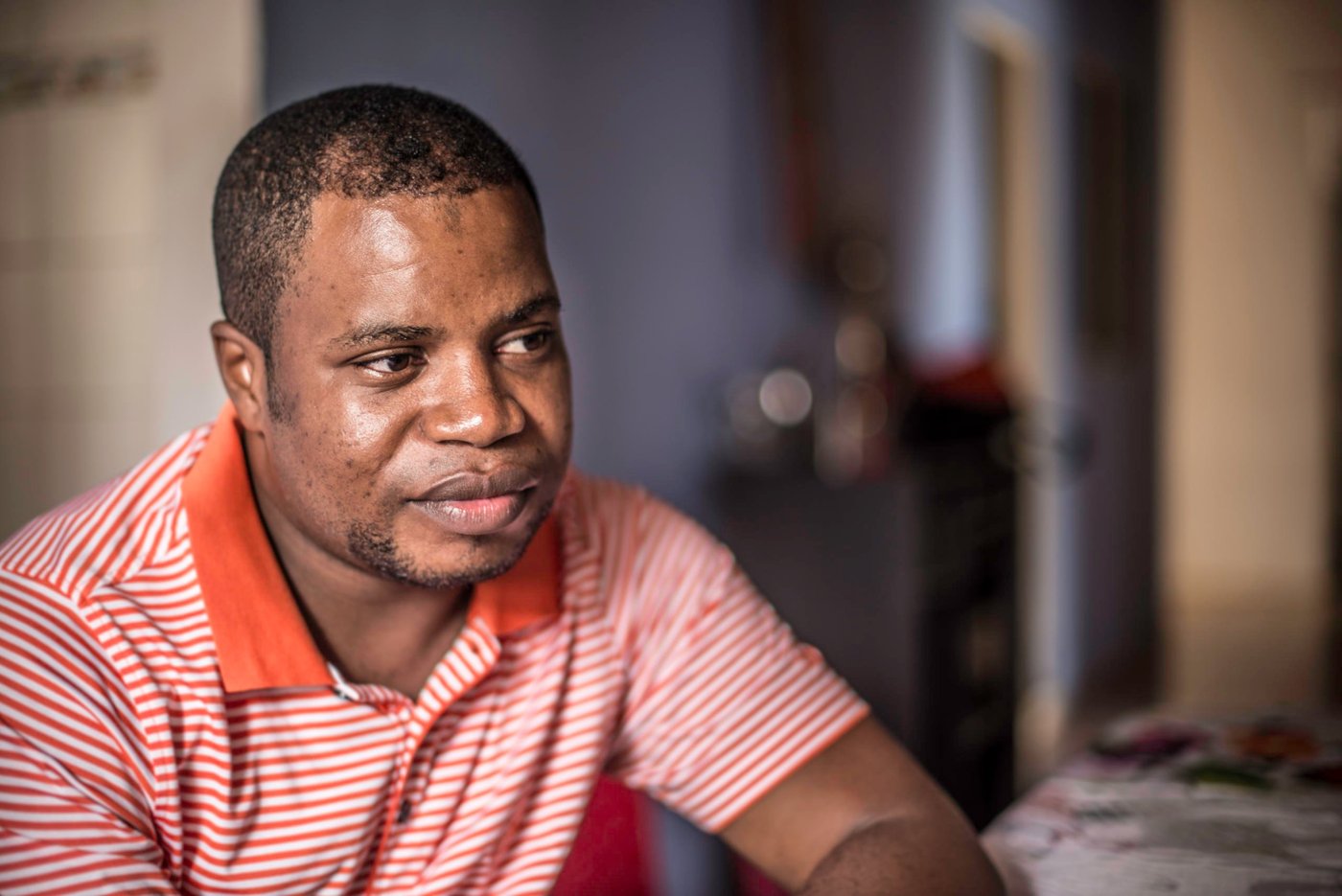
A new situation
"What we experience now, I never experienced as a child," says Eva. "Growing up, I led a calm and peaceful life, and I did not hear of the armed groups until I was 12 years old. That's when I first heard of groups who killed and forced people to flee from one place to another.
Eva's parents were poor farmers, but they made sure that she attended school. When she was studying, she met her husband, and today they have six children together: two girls who go to school in another village, and four younger sons.
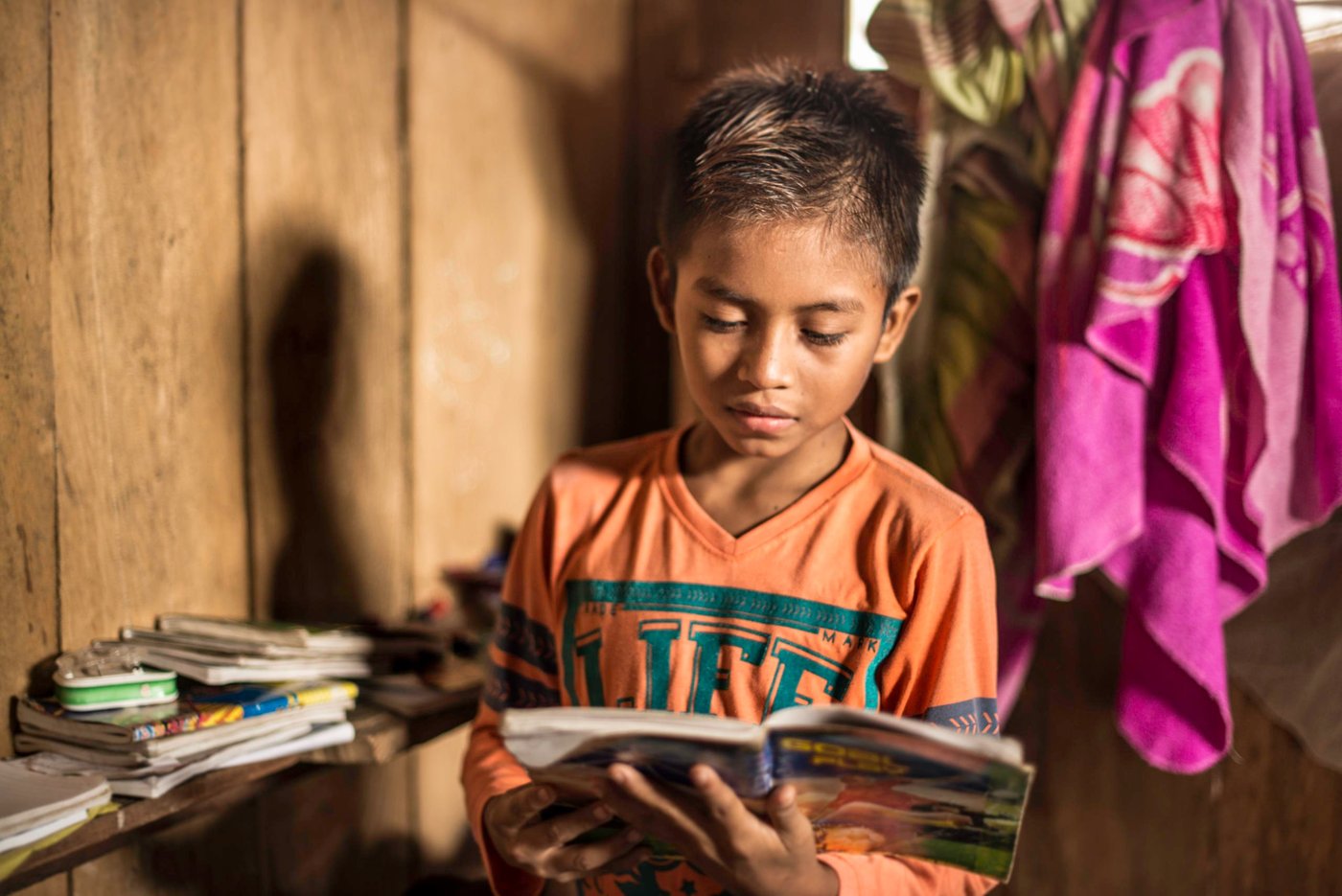
Keeping traditions alive
Eva and her husband want to continue the traditions their people have had through generations. At home, he would hunt and fish, and the family worked in the fields. Eva cooked, knitted clothes and made traditional jewellery using beads.
"When I was a little girl, my mother dressed in "paruma", a traditional skirt that only covers the lower half of the body. She preferred not using a shirt," says Eva.
Her mother taught Eva all she knows today.
"She taught me how we paint our bodies and how to make beaded necklaces we call "shakira". I haven't forgotten any of the things she taught me."
Her mother is still alive, but Eva does not know where she is. She also had to flee from the violence and the fighting in the area.
"I haven't been able to contact her, and I don't know if she's alright. I'm worried about her."
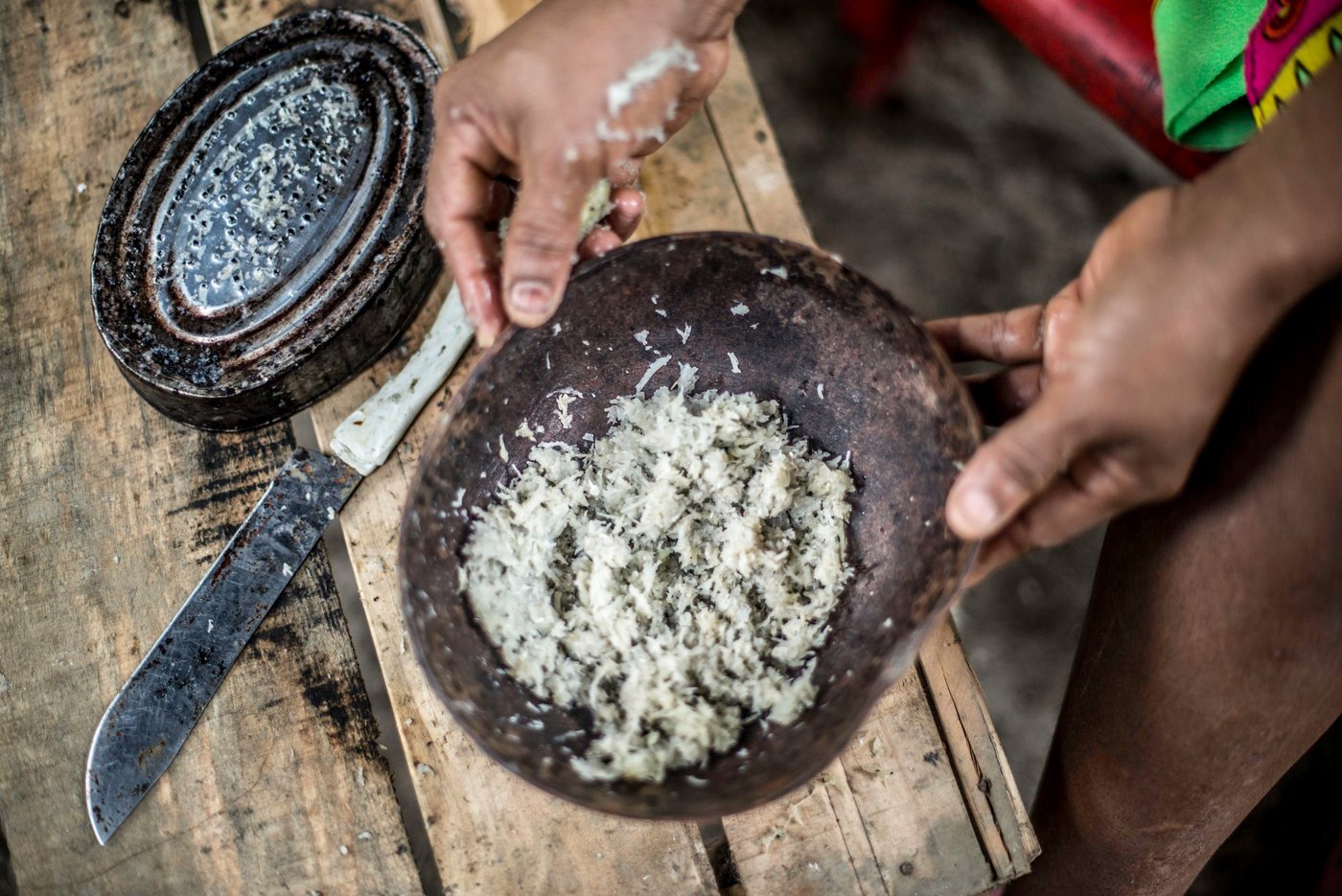
Wishing for a peaceful life
One of the village leaders explains that this is not the first time his people have been forced to flee. He is frustrated with the situation.
"Our people are forced to leave our land and everything we depend on: our animals and our crops – cocoa, banana, corn," he says.
He wants a peaceful life.
"This conflict has lasted way too long. After all, we only have one life."
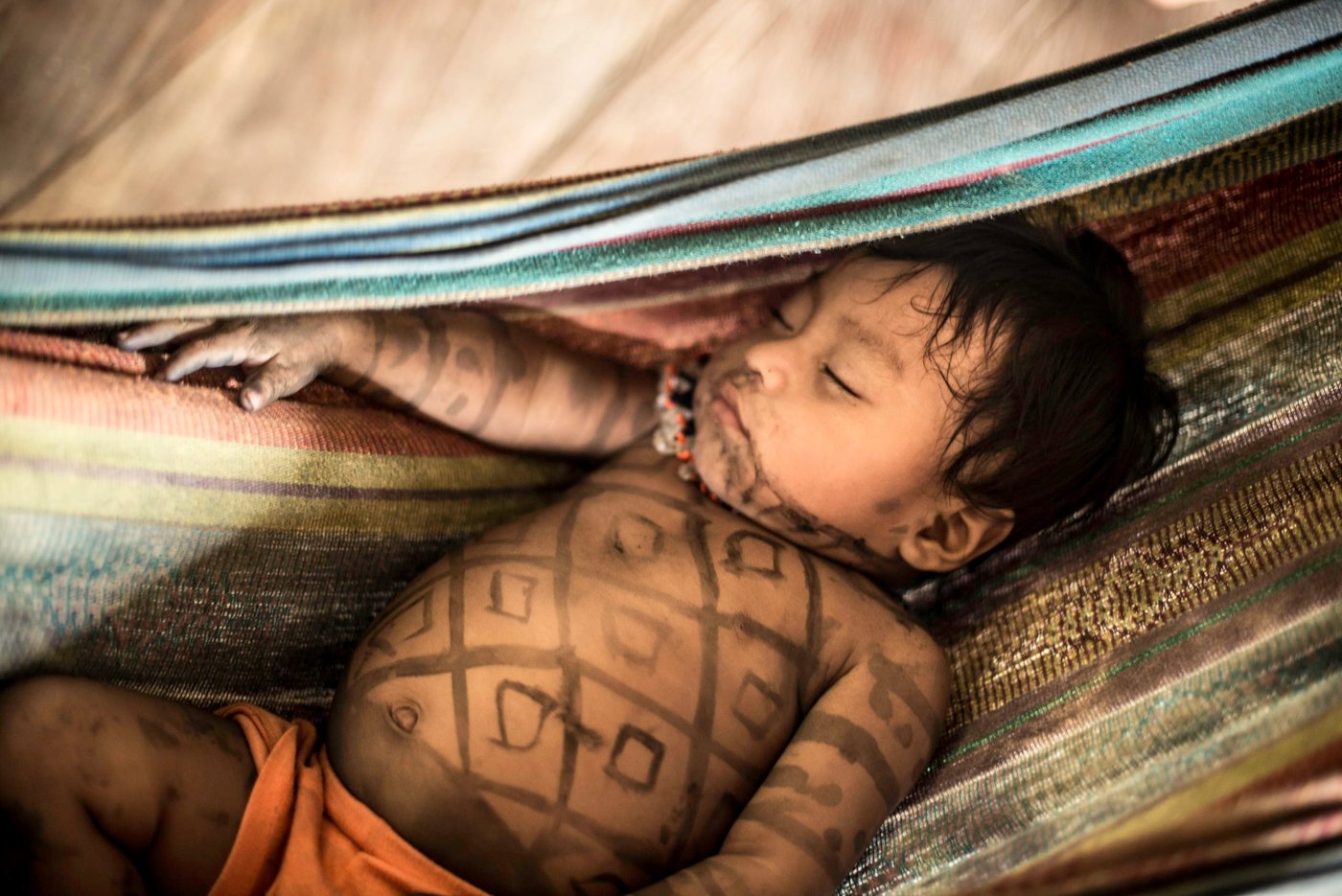
Our work in the area
The Norwegian Refugee Council (NRC) has been present in Colombia since 1991.
"In Chocó we inform indigenous groups about their rights and provide legal aid in questions relating to land rights and compensation after having been forced to flee," says Judith Palacios, who works with legal counselling in NRC. "In this village we help make sure that children get to go to school, and provide clean water to the community."
